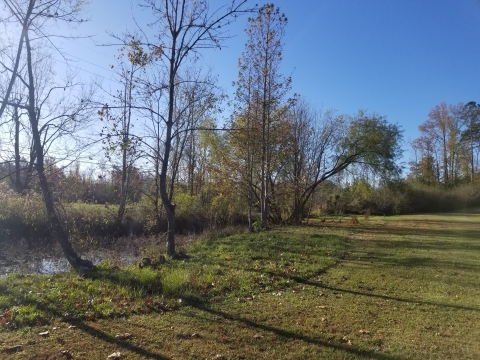Alabama’s natural world can be summarized in a single word – biodiversity.
The numbers tell the story: the state is home to 27% of North America’s fish species; 28% of the freshwater snails; 22% of the crayfishes; 57% of the freshwater turtles; and 61% of the freshwater mussels. In addition, Alabama is host to over 140 federally listed species, most of which are associated with aquatic habitats.
Nowhere is that biodiversity on greater display than Central Alabama. The Appalachian plateaus, ridges and valleys, Piedmont and coastal plains all meet near the middle of the state. The confluence of these physiographic regions produces an array of habitats and watersheds which lead to a wealth of different species found nowhere else.
Central Alabama is also home to Birmingham, one of Alabama’s more populated and demographically diverse cities. Conservation in and around this urban-wildland interface can be challenging, particularly when more than 95% of the state is privately owned. However, this same challenge affords an opportunity, primarily the opportunity to educate the public and work with diverse partners, including community members, non-profits, corporations, and federal, state, county, and municipal governments.
A recently completed stream restoration project on Turkey Creek represents just such an opportunity. Turkey Creek is unique in that it is predominately fed by cold-water springs and contains a substrate of porous bedrock. It is home to several rare species, including the vermilion darter. Federally listed as endangered, the darter is only known to occur in an 11-mile stretch of Turkey Creek.
Fish passage barriers and excessive sedimentation, which comes largely from a failed property development, are the primary threats faced by the darter. In 2014, the Partners for Fish and Wildlife Program (PFW) worked with a local nonprofit and other partners to remove a historic dam near the creek’s headwaters. Soon after the dam was removed, though, a 500-year flood damaged the habitat and limited passage for fish moving upstream.
In 2016, the partners again started restoring the habitat to pre-dam conditions. Yet engineers and biologists discovered another problem. The main channel had been blocked by chert, a type of rock alien to Turkey Creek. The rocks rerouted the stream through a county sewer right-of-way in two separate locations. With the lack of vegetation commonly associated with rights-of-way, there was nothing to slow the rate of erosion.
Over the last few years, the landowner, Freshwater Land Trust (FLT), worked with the Partners program to enhance the habitat for vermilion darters and improve overall water quality. The office of Jefferson County Commissioner Joe Knight, along with contributions from PFW and The Nature Conservancy, paid for surveys and stream restoration designs.
Engineers proposed reconnecting the stream to the floodplain, stabilizing the streambanks at both polluted sites, and restoring one of the sites. An original channel was excavated and step pools and riffles were constructed to slow the stream’s flow. The lower end of the eroding channel was left open to serve as backfill for flood waters. The newly created bank was stabilized using trees, root-wads, brush, and woven, biodegradable mats. Another bank was re-sloped and stabilized. All materials were either harvested onsite or provided by PFW. Construction was performed by Jefferson County personnel.
Once completed, staff from the land trust and the Turkey Creek Nature Preserve planted trees, shrubs, and a native seed mix. Today, there’s a noticeable decrease in the sediment load entering the stream. Vermilion darters and rush darters, another endangered species, as well as Turkey Creek’s overall aquatic biodiversity benefit from the improved water quality.
Partnering with so many organizations, while working closely with the local government and elected officials, proved invaluable too. People with diverse backgrounds were exposed to the world of resource conservation. Utility workers, who maintain the rights-of-way that run alongside many central Alabama streams, learned about rare species and protection of sensitive habitat.
And Jefferson County and its residents now view the U.S. Fish and Wildlife Service less like a disciplinary body and more like a partner.





